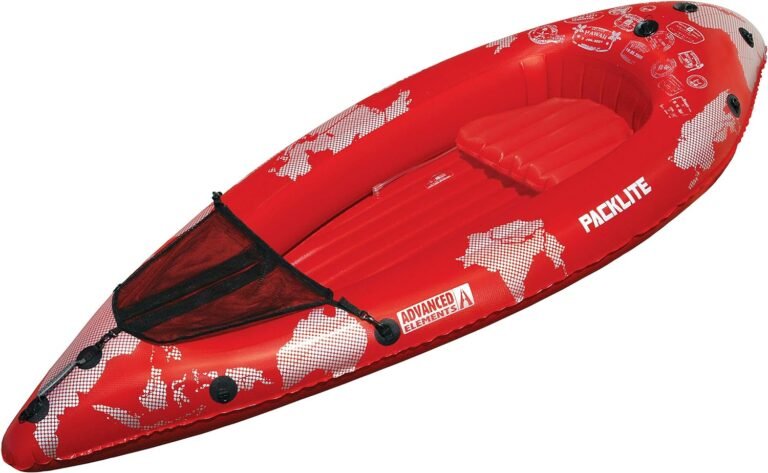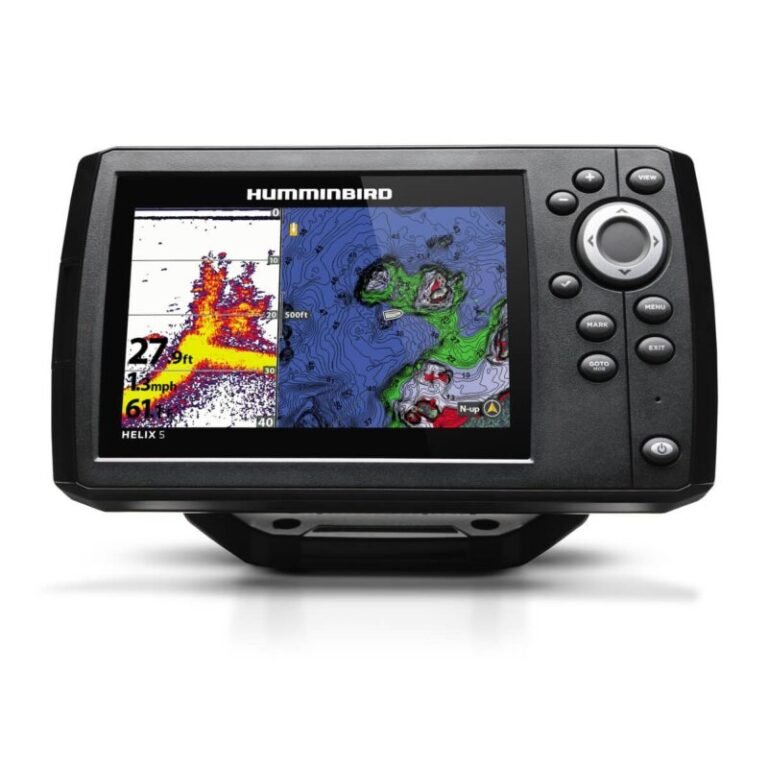What To Do When Kayaking In A Thunderstorm?

Kayaking is a fun way to relax, enjoy nature, and exercise. The sport promotes physical and mental fitness. Like all things in life, the sport does carry some risks.
These risks vary with the type of kayaking taking place (whitewater kayaking is more dangerous than flatwater kayaking).
Kayaking is perhaps most dangerous when it is done in a thunderstorm. In this article, we look at kayaking in thunderstorms and what you can do to be safe.
What Is A Thunderstorm?
A thunderstorm is a natural and often destructive event that results from a cumulonimbus cloud (a large, thickened parcel of weather air) becoming unstable.
The instability can be caused by lightning, strong wind shear, or even the extreme temperature difference between the top of the clouds and the lower atmosphere.
Thunderstorms are characterized by the presence of thunder and lightning usually with heavy rain and/or hail. Strong wind gusts and high waves are also common occurrences in a thunderstorm.
Why Is Kayaking In A Thunderstorm Dangerous?
Kayaking during a thunderstorm can be dangerous for several reasons some of which are given below.
- The noise of the thunder and waves can disorient you making you lose track of what you are doing and which direction is safe.
- The electric field created by the storm can cause tingling or even paralysis in the arms and legs of kayakers. If you are in the thunderstorm for too long, the tingling or paralysis can make you unable to paddle and navigate your kayak leaving you at the mercy of the storm.
- Lightning can strike any unprotected object, including a kayak, at any time causing serious injury or even death. Thunderstorms are famous for their lightning strikes and those who survive such strikes are usually not in good shape. Lightning can cause deafness, paralysis, and even death.
- Rip currents are common in thunderstorms and can cause you to lose control of your kayak. These currents take you away from the shore putting you in greater danger and making it harder to reach safety.
- Thunderstorms can produce high winds that could knock you off your kayak or carry you away. Thunderstorms are also famous for dangerous wins that destroy things. If you are particularly unfortunate, any such wind could lift you off your watercraft and carry you away. The chances of surviving this predicament are especially low.
How To Equip Yourself For Kayaking In A Thunderstorm?
Every accomplished kayaker should know how to handle himself on the water. That includes knowing what to do in emergency situations.
Experienced kayakers will most likely be able to predict unfavorable weather and be smart enough to not kayak but seek shelter during it.
Emergencies can however arise abruptly and the weather forecast could be wrong. The possible result is that you find yourself kayaking in a thunderstorm.
Knowing what a thunderstorm is, the dangers associated with it, and safety practices in a thunderstorm significantly increase your chances of survival. What to do to equip yourself for such situations is given below.
Be Aware Of The Dangers Of Lightning
Lightning is one of the most famous and ubiquitous phenomena in the world. It is a powerful electric discharge that occurs between two clouds or between a cloud and the ground.
It can be very dangerous, striking with incredible force and causing severe damage. Lightning occurs during a thunderstorm. It can also be seen on clear days but is less frequent.
As lightning is electricity, you know that should it strike a waterbody while you are kayaking in it, you could be in for the shock of your life as water conducts electricity.
You thus know that a smart thing to do should you find yourself in a thunderstorm is to vacate areas with lots of water and find shelter.
Here are some things to keep in mind if you’re in the vicinity of lightning:
- Stay inside a building during a lightning storm.
- If you are outside and see lighting, get away from the area as quickly as possible.
- If you are outside during a storm, retreat from tall objects such as trees and poles. They are more likely to be struck by lightning.
- If you see lightning strike a tall object, stop immediately and seek shelter.
- Should lightning strike nearby, lie on the ground with your hands over your head.
Be Aware Of The Dangers Of High Winds
Kayaking can be a great way to get a workout and see some amazing scenery, but be aware of the dangers of paddling in high winds.
If the wind gets too strong, your kayak will start to drift away from shore and you could lose control. If this happens, you could end up in dangerous water or in danger of being hit by a boat or other object.
Kayakers should always wear a life jacket and stay alert and safe while paddling in high winds! It is crucial to keep in mind that thunderstorms often create high winds so should you be kayaking in one, lightning bolts are not the only things you should dodge.
Check The Weather Forecast Before You Go Kayaking
Kayaking is a great way to get some exercise, but it’s important to check the weather forecast first! There can be dangerous conditions and you will be in danger if you’re not aware of them.
Also, make sure you have an emergency phone number with you in case things go wrong. It is a good idea to periodically check weather reports while kayaking on the water even as you keep a keen eye on your surroundings.
If a thunderstorm is predicted or you notice a drastic change in weather, get off the water as quickly as possible.
Stay Calm And Take Action If You Encounter A Thunderstorm While Kayaking
Thunderstorms can be a beautiful sight while kayaking, but they can also be dangerous. If you encounter one while kayaking, stay calm and take action. Here are five tips to help you stay safe during a thunderstorm:
- Always use caution when kayaking in open water. Thunderstorms can produce large waves that can easily capsize your kayak.
- Listen to local weather reports and heed any safety warnings.
- Be careful when paddling near the shoreline. It is crucial to be aware of areas that are prone to flooding, such as low-lying areas or shorelines when kayaking in a thunderstorm. That way you can avoid them and they won’t make your adventure more dangerous than it already is.
- If there is an emergency or evacuation plan in place for your location, follow it.
- Do not try to get out of the kayak to avoid being struck by lightning. Rather try maneuvering the kayak to dodge the discharge. Remember that water conducts electricity and entering a water body during a thunderstorm is asking for trouble. Even if you are not struck, the turbulent waves will make it virtually impossible to reboard your vessel leaving you at the mercy of the elements.
What To Do When Kayaking In A Thunderstorm?
Kayaking in a thunderstorm is undeniably extremely dangerous. Overall, it is best to avoid kayaking in thunderstorms altogether. However, if you find yourself in one, following these tips can help keep you safe.
1. Stay Away From Waterfalls And Ledges.
Waterfalls and ledges can be treacherous places to kayak in a thunderstorm. These areas can be especially dangerous because they can quickly become flooded, making them difficult to navigate and potentially causing you to lose control of your kayak.
Additionally, the force of the water can knock you off your kayak, leaving you stranded in the middle of a dangerous river. There is also the danger of a rockfall which is bad news ordinarily and even worse news in a thunderstorm.
If you must kayak near waterfalls or ledges during a thunderstorm, be sure to use caution and stay well clear of these areas.
2. Get Off The Water As Soon As Possible.
By now you know that a thunderstorm while kayaking is bad news and it is best to let the storm run its course before resuming your adventure.
Kayakers should always use all available means to avoid getting caught in a thunderstorm. This includes getting off the water as soon as possible.
Kayakers should paddle towards shore or a boat if they can’t get away from the storm. If kayakers are in danger of being swept into the storm, they should try to tie themselves to something solid, like a tree, and wait it out.
Getting off the water is however your best bet of surviving the storm. Never forget that water and electricity are good friends; your body and electricity are also good friends so being on the water is almost a sure recipe for disaster.
3. Find Shelter.
As kayakers, we love exploring new waterways and being in nature. However, sometimes Mother Nature can be a bit too wild for our comfort.
One such time is during a thunderstorm when you may find yourself in need of shelter from the rain, wind, and other elements.
Knowing the waterway you are navigating becomes a huge advantage as you probably already know without the use of a map where to go to reach safety. But kayakers love exploring and the chances you are in a known environment during a thunderstorm are low.
In those instances, the first thing to do is determine if there is anywhere you can safely anchor your kayak. A place to anchor your watercraft likely means a settlement nearby where you can take refuge from the elements.
If you find that there is no place to anchor, then your best option may be to paddle away from the storm.
Getting off the water is imperative for safety so the next thing you can do is to either paddle downstream in search of shelter or stay in one of the inlets and small coves if the area has them.
No matter what you do, try leaving the water and seeking shelter.
4. Avoid Trees And Tall Objects.
There is a lot of misinformation out there when it comes to lightning and thunderstorms. Some people think that tall trees or objects make the best shelter from a lightning strike.
This couldn’t be further from the truth! In fact, staying beneath trees and other tall objects is some of the worst things you can do if you’re in a thunderstorm. Here are 4 reasons why:
- Lightning can travel through branches and leaves quite easily, so even a small tree could be hit.
- Tall objects especially trees and buildings with a lot of metal and/or electronics make good targets for lightning discharges.
- If a tree or tall object is hit, it could fall and injure someone nearby.
- Lightning can cause fires and damage to electronics.
5. Don’t Stand In Water.
Thunderstorms can be dangerous and even life-threatening, so it is important to take precautions when there is lightning and heavy rain present.
Standing in water can be dangerous because lightning can strike anywhere in the vicinity, including into the water. Additionally, standing in water increases your chance of getting wet and hypothermic, which can be dangerous in itself.
It is also recommended to avoid driving and water bodies during lightning storms. You should always seek shelter during a thunderstorm.
It’s best to avoid it altogether. If you must be in the water, stay close to shore and move quickly when the storm passes.
6. Disconnect Your Kayak From Other Boats.
kayakers can protect themselves from lightning strikes by disconnecting their kayaks from other boats during a thunderstorm.
Disconnecting allows kayakers to have more control over their vessels in the event of a blowout and also reduces the potential for electrical shocks.
Experts generally recommend disconnecting during a thunderstorm if you are within 20 miles of a Stormfront or if the forecast includes severe weather conditions, such as heavy rain, high winds, or thunder.
Make sure to follow all safety guidelines when disconnecting your watercraft, including making sure everyone is clear of the water and has a solid line.
Kayakers should also avoid using their electronics while kayaking during a thunderstorm, as they can create a large electrical spark that could ignite the storm clouds and cause a dangerous chain reaction.
7. If You Are Struck By Lightning, Seek Medical Attention.
If you are struck by lightning, seek medical attention. Lightning is a powerful electrical discharge that can cause serious injury, even death.
There is a significant risk of death if you are hit by a lightning bolt, and even if you aren’t killed outright, there is a good chance that you will be seriously injured.
Seek medical help as soon as possible after being struck by lightning, and don’t assume that just because it didn’t hurt when the bolt hit you you are safe.
If you are struck, immediately remove any metal objects from around your body (rings, watches, chains, etc.) and call 911. Stay still and quiet until help arrives.
Some symptoms of being struck by lightning include lightheadedness, dizziness, tingling, numbness, or pain in the arm or leg.
Avoiding A Lightning Strike
Lightning is one of the most dangerous things that can happen while kayaking on the water. Here are 5 tips to help you stay safe when out on the water:
- Always have a signal mirror with you in case of an emergency.
- Keep your kayak close to the shore so you can get off quickly if necessary.
- Never take shelter under a tree or other object during a lightning storm.
- Always keep an eye out for signs of lightning, such as dark clouds, flashes of lightning, and thunder.
- If in danger, either relax and float with the current or head towards shore.
If you are in a lightning storm whether on land or water and the hairs on your body suddenly stand up, quickly leave that vicinity as it means that lightning is about to strike you. Dodge the bolt and seek shelter.
When kayaking in a thunderstorm, you should take the necessary precautions to stay safe. Make sure to be aware of your surroundings and keep an eye on the forecast. If a storm is imminent, head for shore.
If you are already out on the water, try to get to land as quickly and safely as possible. Keep these tips in mind if you happen to be kayaking in a thunderstorm.
- Get off the water as soon as possible.
- Stay away from tall objects and bodies of water.
- Do not stand in puddles or under trees.
- Stay away from power lines.
- Be careful when entering or exiting your kayak
- Always remember to wear your life jacket.
- Get and stay inside a safe building if possible.
- If you are struck by lightning or otherwise injured, seek medical attention.
Thunderstorms can be dangerous, so it is important to be aware of the risks and take the necessary precautions to ensure your safety. Remember, it is always better to be safe than sorry. Have a fun and safe kayaking experience!






